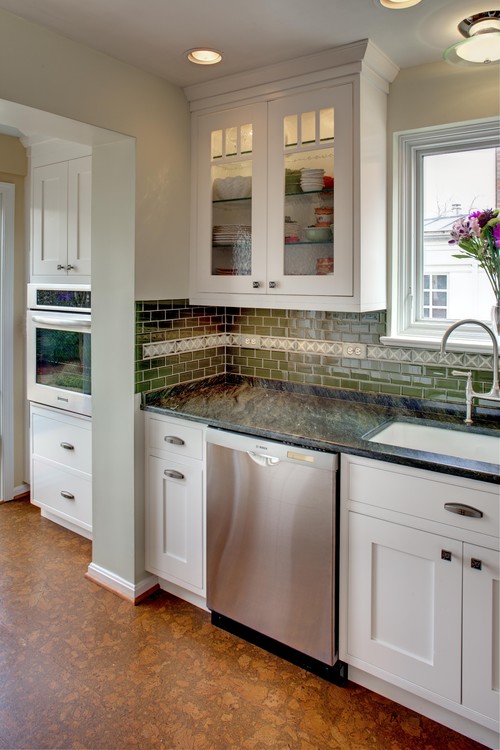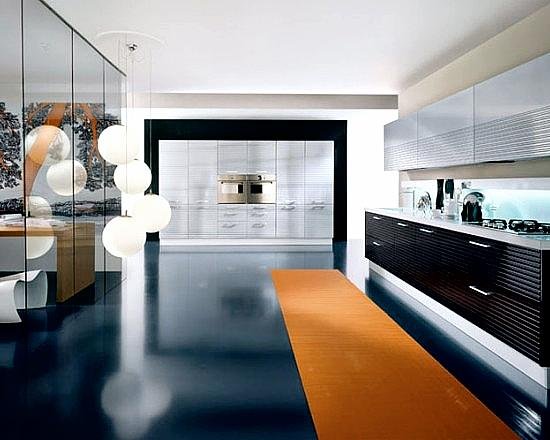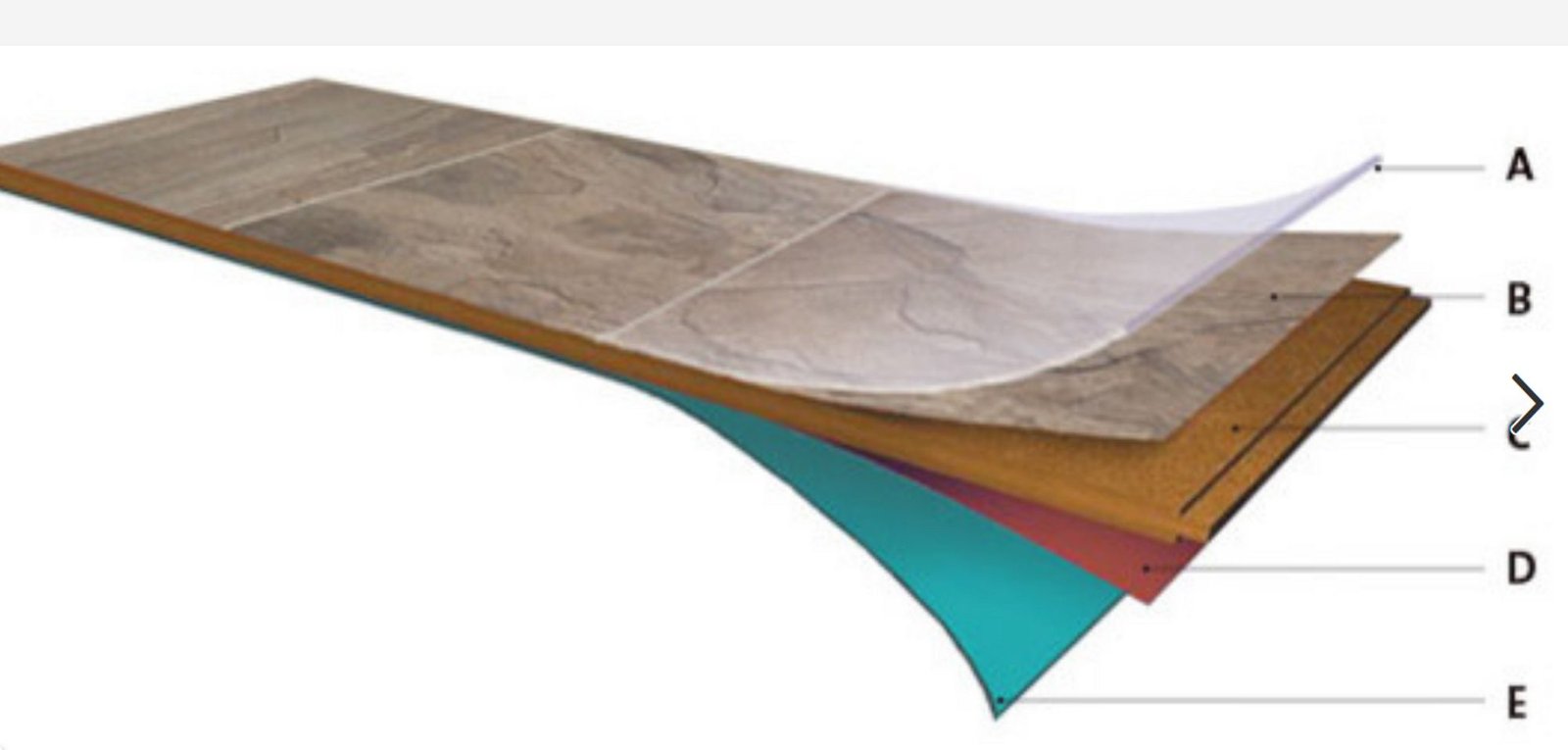One of the most comfortable types of flooring is cork flooring. The cork composition is reminiscent of that of a sponge (soft and pleasant) and makes it ideal for tiling the kitchen floor, where in fact, you spend so much time standing, chatting, drinking o cup of coffee or preparing food for loved ones.

Photo by Case Design/Remodeling, Inc. – Look for kitchen pictures
But, is this kind of flooring really suitable for a kitchen? The answer is yes. It is comfortable to stand on it and is also, very easy to maintain. Place mats or area rugs in front of sink and the appliances to protect the floor from dropping grease, foods, water spillages and traffic. However, it is better do not drag furniture or other heavy objects across the floor. A good idea is to use felt pads on table and chair legs.
Maintenance of such floors in the kitchen is quite simple: every 2 days it can be vacuumed and wiped with a damp cloth.
Compared with most finishing solutions floors, cork is a warm material. In addition, unlike the hardwood floor or laminate flooring, it tolerates installing floor heating systems, enhancing the feeling of comfort and warmth, without the danger of having deformation and bumps on the surface. Moreover, cork is a material that does not absorb or retain odors, which is an additional reason to be recommended as a suitable flooring for your kitchen.
Besides the long series of qualities that recommend cork boards for the kitchen floor, there is also an issue that requires a particular attention if you want to prolong its lifespan, namely moisture. If corkboards are not assembled and sealed properly, water can penetrate through them. Therefore, especially in the kitchen, where we are dealing with a humid environment, it is important to give a careful attention to the finishing.
Another benefit of choosing cork flooring for kitchens are those that contribute to the health of the spine which spend a lot of time, standing here for hours, because cork helps lower column pressure while walking or standing. So, it is not surprising that cork is becoming an increasingly a popular and stylish option as a kitchen floor material.
Cork flooring can be installed over un-primed drywall, concrete or plywood subfloor. However, regardless of the subfloor types, the surface must be completely smooth without any bumps or rises; otherwise, any imperfection can be seen through the cork floor. How I mentioned above due to the water concerns, cork tiles must be completely sealed against moisture. You can do that applying several polyurethane or varnish layers.
Because it is a natural product, which means that patterns and colors found in nature can be found also in these cork tiles.
A Modern Flooring Product – Slate Flooring (howtobuildahouseblog.com)


